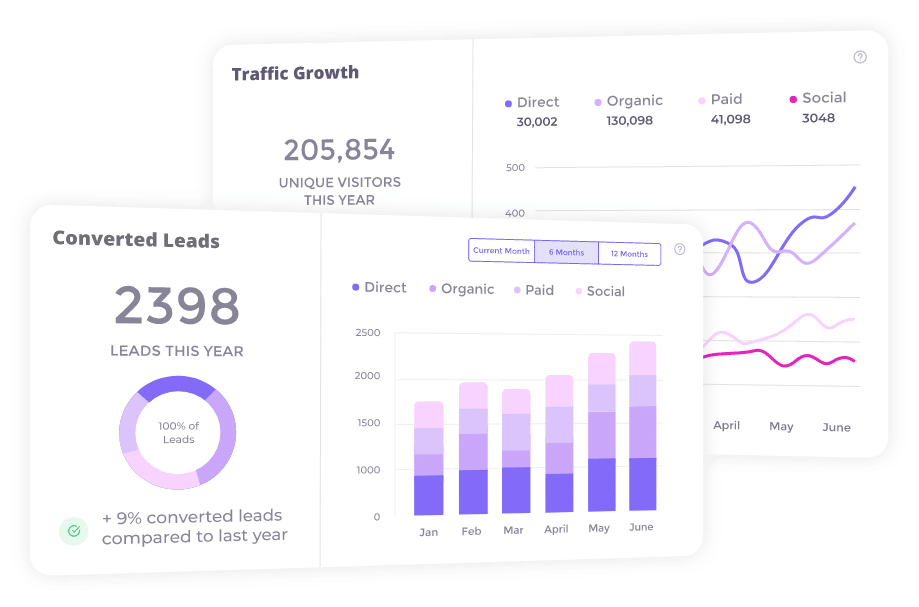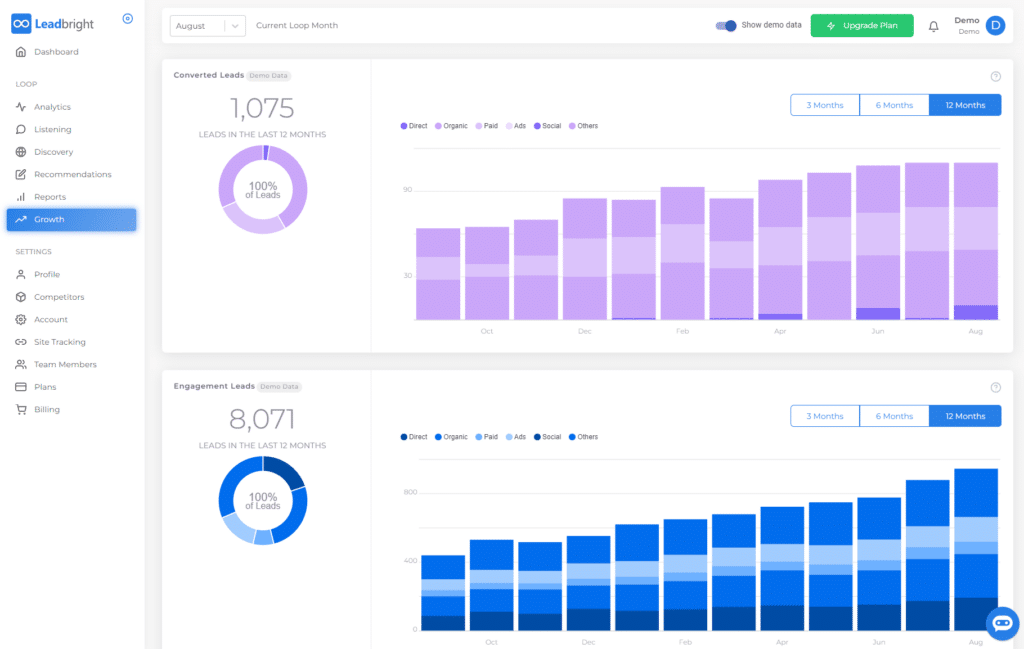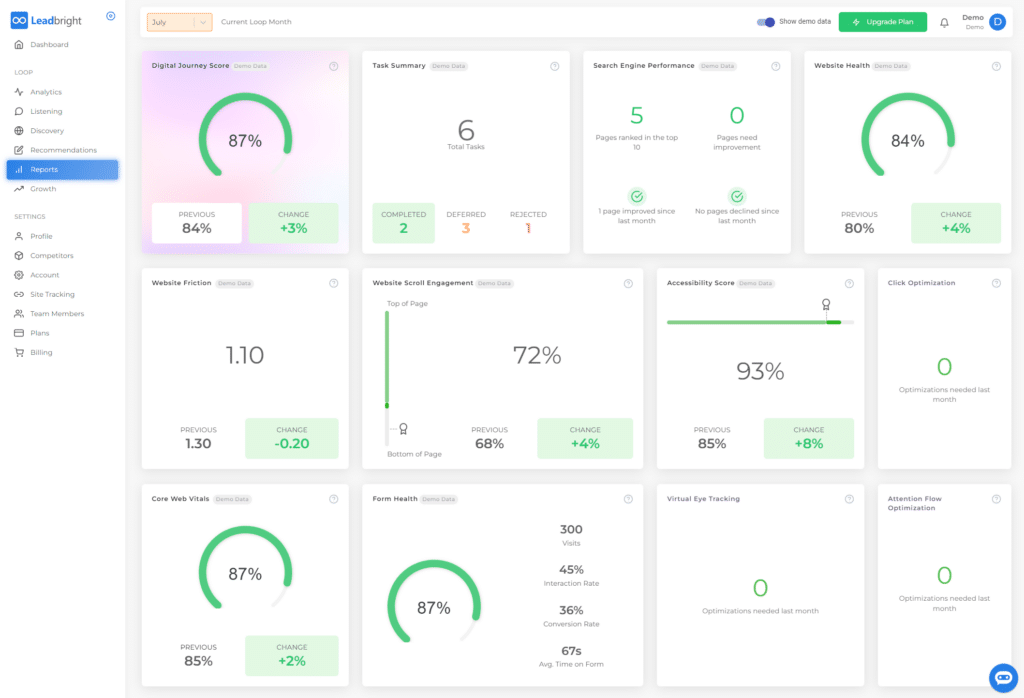How Metrics and Analytics Are Critical to Business Success and Scalable Growth

It delves into essential metrics, the leverage of analytics for expansion, distinguishes between website and application metrics, and addresses implementation challenges, with insights drawn from real-world case studies.
Key Takeaways
- Metrics and analytics play a critical role in driving success and scalable growth across industries.
- Utilizing key metrics such as customer retention, conversion rate, revenue growth, user engagement, and market share allows organizations to make strategic decisions towards sustainable growth.
- Leveraging analytics enables organizations to strategize and execute plans for sustained expansion, including customer segmentation, performance tracking, and personalized interactions.
- Real-world case studies demonstrate the effectiveness of metrics and analytics in improving efficiency, optimizing strategies, and reducing costs in various industries.
Understanding the Role of Metrics and Analytics in Business
In the realm of business success and scalable growth, understanding the role of metrics and analytics is paramount. Specifically, how combining essential infrastructure metrics with high-cardinality application observability can expedite debugging processes.
Metrics perform a crucial function in quantifying and evaluating various aspects of business operations. This ranges from financial performance to production efficiency. This data-centric approach facilitates informed decision-making processes that align closely with organizational objectives.
The importance of analytics cannot be understated as it offers comprehensive insights into complex business scenarios. It enables businesses to interpret extensive volumes of data produced by their operational activities, thereby enhancing strategic planning capabilities. By leveraging these analytical tools, organizations can effectively track customer behavior patterns. This provides invaluable information for tailoring marketing strategies according to consumer needs.
Data-driven decision making has become an integral factor in measuring business performance accurately. It ensures decisions are based on factual evidence rather than assumptions or intuition. The integration of metrics and analytics within a company’s operational structure fosters increased transparency, accountability, and clarity regarding the effectiveness of implemented strategies.
Thus, understanding the power of metrics combined with robust analytics is instrumental in driving sustainable growth and scalability in today’s competitive business landscape.
Key Metrics That Drive Business Success

Key performance indicators often serve as fundamental drivers of prosperity for enterprises, facilitating sustainable expansion. These metrics can be instrumental in driving success and growth when correctly identified, tracked, and acted upon.
- Customer Retention: This metric is a significant indicator of the company’s product or service quality and customer satisfaction level. An increase in customer retention signifies that a business can keep its customers satisfied over time.
- Conversion Rate: This denotes the percentage of website visitors or users who take desired actions such as making a purchase or signing up for services. High conversion rates indicate effective marketing strategies and user engagement.
- Revenue Growth: This essential metric measures the increase in an enterprise’s net income over a specified period, indicating financial health.
Moreover, metrics like user engagement aid businesses in understanding how effectively they are maintaining their audience’s interest while market share provides insights into competition within the industry.
Utilizing these key performance indicators will not only provide actionable data but also allow organizations to make strategic decisions towards achieving long-term goals and sustainable growth.
Leveraging Analytics for Scalable Growth
Leveraging data-driven insights enables organizations to strategize and execute plans for sustained expansion. This process, often referred to as data driven decision making, utilizes a variety of metrics and analytics that allow businesses to understand their market, optimize operations, and guide strategic planning.
One critical aspect of this approach is customer segmentation. By analyzing user engagement and collecting various data points about customers’ behaviors, preferences, and needs, organizations can create targeted marketing strategies which increase conversion optimization rates. Different segments require different approaches; therefore understanding these intricate details allows for more personalized interactions with each group.

Moreover, performance tracking plays a pivotal role in maintaining the growth trajectory. Analyzing key performance indicators (KPIs) helps organizations track their progress towards set goals while also identifying areas requiring improvement or adjustment.
Thus it becomes evident that leveraging analytics for scalable growth isn’t simply an option but rather a fundamental element of modern business strategies. It offers valuable insights that drive decision-making processes crucially impacting the organization’s ability to grow successfully in an increasingly competitive marketplace.
Case Studies: Real-world Applications of Metrics and Analytics
Case studies from various industries provide tangible examples of how data-driven decision-making strategies have been effectively implemented, leading to optimized operations and strategic planning. In these real-world examples, the importance of metrics and analytics is clearly demonstrated.
- A prominent e-commerce platform utilized data-driven decisions to streamline its operations. By measuring performance via website traffic, user behavior, and tracking conversions, actionable insights were generated that significantly improved efficiency.
- A renowned financial institution employed sophisticated analytical tools to optimize strategies for customer retention and acquisition. This was achieved by analyzing transactional data and customer feedback which led to the development of targeted marketing campaigns.
- A global logistics company harnessed the power of analytics for route optimization and cost reduction. Through analysis of travel times, vehicle capacities, and fuel consumption rates among other metrics, efficient routes were designed resulting in substantial savings.
These cases illustrate that regardless of industry or scale, effective utilization of metrics and analytics can drive business success by enhancing operational efficiency and contributing towards scalable growth. Therefore, it becomes imperative for businesses to adopt a culture centered on data-driven decision making.
How Website and Application Metrics Differ
Understanding the distinction between website and application measurements is essential in providing a more comprehensive view of user behavior, performance issues, and overall system functionality.
Website metrics revolve around data collection from user interactions with the site, examining parameters such as time spent on page, bounce rates, and conversion rates. These metrics provide insights into user behavior patterns which aid in enhancing web content for optimal engagement.
On the contrary, application metrics focus on performance monitoring of software applications. They involve measuring aspects like request rate, error rate, and transaction times to identify any operational bottlenecks or inefficiencies. This data analysis enables developers to troubleshoot problems swiftly and ensure high-performing applications.
The visualization of these distinct sets of metrics provides an integrated perspective on both user experience and technical performance. This dual approach allows businesses to align their IT operations closely with their business objectives, thereby driving scalable growth.
Overcoming Challenges in Implementing Metrics and Analytics
Having differentiated between website and application metrics, the subsequent focus is on identifying the data challenges in implementing these metrics and analytics. The importance of such an undertaking cannot be overstated, given that the appropriate deployment of metrics and analytics plays a pivotal role in business success and scalable growth.

- Data Challenges: Often, businesses grapple with issues related to data quality, volume, variety, velocity, and veracity. Overcoming these hurdles requires comprehensive measurement strategies that not only take into account these difficulties but also provide solutions for effective data management.
- Measurement Strategies: These strategies must effectively address data integration – a key component in ensuring accurate interpretation of combined datasets from disparate sources. A well-crafted strategy promotes harmonization of collected information leading to insightful analysis.
- Data Quality and Privacy: Concomitant to these stages is the assurance of high-quality data through rigorous verification processes that eliminate inaccuracies or inconsistencies. Equally important is maintaining stringent standards for data privacy which safeguards sensitive information against unauthorized access or breaches.
Frequently Asked Questions
What Are Some Common Misconceptions About the Use of Metrics and Analytics in Business?
Misconceptions about metrics and analytics in business often entail misguided measurements, inaccurate interpretation, data deception, and analytics abuse. These misunderstandings can lead to ineffective strategies and hindered growth if not properly understood and addressed.
How Do Different Industries Implement and Utilize Metrics and Analytics Differently?
Diverse industries implement metrics and analytics uniquely. Industry-specific metrics guide data-driven marketing in retail, while healthcare leverages analytics for patient outcomes. Manufacturing utilizes specific metrics to optimize production processes and maintain quality control.
Are There Any Potential Downsides or Risks to Relying Heavily on Metrics and Analytics for Business Decision Making?
Potential risks of heavy reliance on metrics and analytics include data misinterpretation, overreliance consequences, privacy concerns, accuracy issues, and decision-making bottlenecks, all potentially leading to flawed business strategies and customer dissatisfaction.
How Can Businesses Ensure They Are Measuring the Right Metrics and Not Just Those That Are Easy to Measure?
Through metric prioritization, businesses can focus on relevant metrics rather than easily measurable ones. Misuse of metrics is avoided by balancing quantitative and qualitative data, thereby enhancing accurate data interpretation for informed decision-making.
What Are Some Emerging Trends or Technologies in Metrics and Analytics That Businesses Should Be Aware Of?
Emerging trends in metrics and analytics include predictive and augmented analytics, driven by big data trends. Real-time analytics and AI-driven metrics are gaining prominence, offering businesses advanced tools for data-driven decision-making processes.
Conclusion
In summation, the profound impact of metrics and analytics on business success and scalable growth cannot be overstated. They are the compass guiding organizations through the labyrinthine world of today’s data-driven market.
Through enhanced understanding of user behavior, improved operational efficiency, and enriched customer satisfaction, they offer a veritable treasure trove for those willing to delve into their depths.
One can’t help but marvel at this digital alchemy – transforming raw data into golden opportunities for growth.



